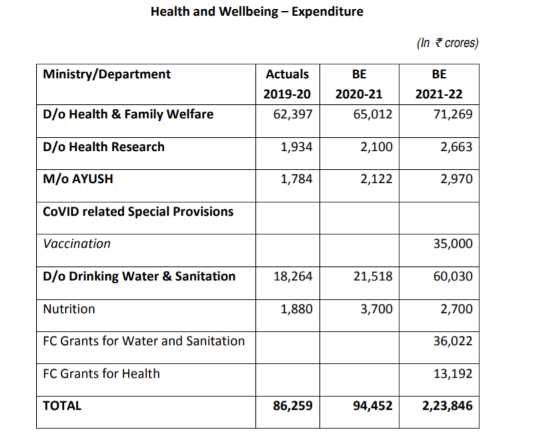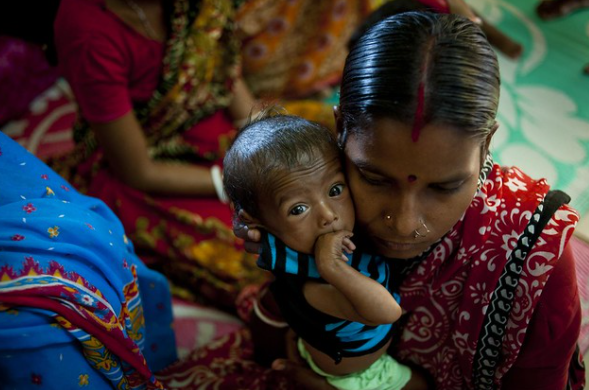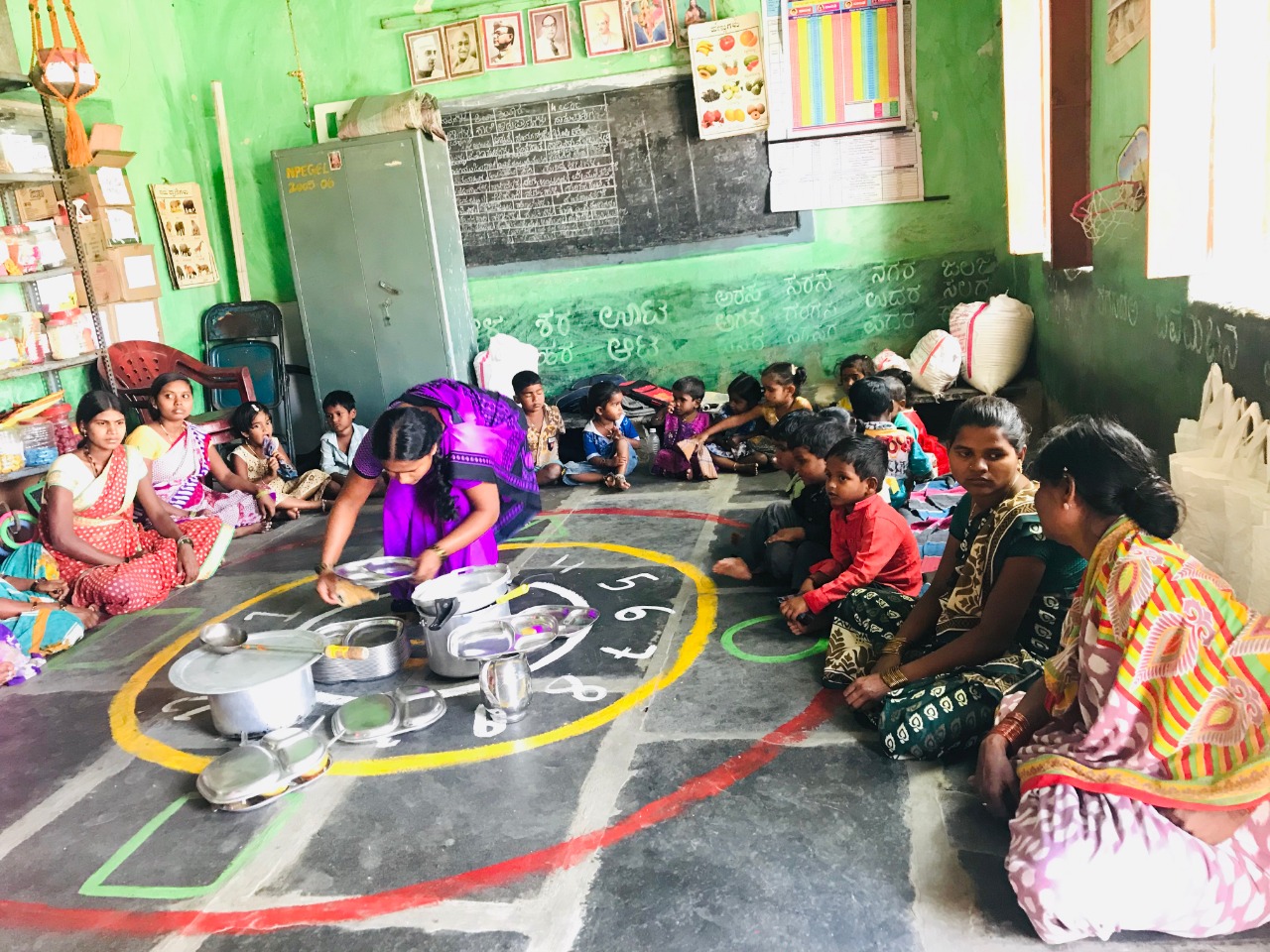Union Budget 2021: 27% drop in funds for nutrition of children and women. Every third child, under the age of 5, is malnourished in India
35% of under-5 kids in India are malnourished, and more than half of all women of reproductive age are anaemic. But, funds to meet the nutritional needs of women and kids reduced from Rs 3,700 crores in 2020-21 to Rs 2,700 crore in Budget 2021-22.


Filed pic. Photo: Unicef India
The Union Budget 2021-22, presented by the finance minister Nirmala Sitharaman in Parliament yesterday, has allocated Rs 2,700 crore towards the nutrition of children and women. This is 27 per cent less than the budget estimates of Rs 3,700 crore on nutrition in the last fiscal year of 2020-21.
Public health and nutrition experts are appalled at this decrease. “A twenty seven per cent decrease in the Budget for nutrition is a huge slash,” Chhaya Pachauli, member of the Jan Swasthya Abhiyan, Rajasthan, told Gaon Connection.
The Budget document also showed the actuals for nutrition in 2019-20 were only Rs 1,880 crores. “The Budget is rejigged this year. One cannot make straightforward comparisons between last year and this year’s budgets. But what is clear is that actual government spending on nutrition schemes was lower than the budgeted amount in 2020-21,” Reetika Khera, associate professor (economics), Indian Institute of Technology, Delhi, told Gaon Connection.

Reduced spending on the nutrition of children and women is worrisome as every third under-5 child in the country is malnourished, and more than half of all women of reproductive age are anaemic, as recorded in the Comprehensive National Nutrition Survey, 2016-18.
“Women and children are among the most vulnerable populations. Even the government data shows how essential services for them, such as immunisation and maternity benefits, were affected during the COVID-19 lockdown. We will pay the price for these budget cuts for years,” added Khera.
Burden of malnutrition
Malnutrition is a huge burden in the country. The Comprehensive National Nutrition Survey, 2016-18, shows 35 per cent under-5 kids in India are stunted, 33 per cent under-5 kids are underweight, and 17 per cent are wasted. Overweight, stunting, and wasting, among children and women results from a failure to receive adequate nutrition over a long period.
The recently released National Family Health Survey (NFHS-5), 2019-20, shows the prevalence of anaemia among children under five years of age has increased in 18 out of 22 states and Union Territories. A similar trend was seen in the prevalence of anaemia among women in the age of 15-49 years. Out of the 22 states/UTs, 16 showed an increase in anaemia among women.
In a country where every third child under-5 is malnourished, the health experts were expecting an increase in the Budget for nutrition-related programmes.

“The NFHS five was concluded before the pandemic, the figures are expected to get worse in the next survey. Amid this crisis, the Budget estimated for nutrition is very disappointing,” Sameet Panda, member, Right to Food Campaign, Odisha, told Gaon Connection.
The health experts were expecting a substantial increase in the budget for health and nutrition this year. “With the funds allocated, the nutrition services and the quality of poshan ahar are not going to see an improvement in the coming years,” said Pachauli.
“The net budget for nutrition should have either doubled or at least there should have been a thirty per cent increase,” she added.
Re-grouped and renamed
Several schemes under the Union Ministry of Women and Child Development have been re-grouped and renamed, such as Saksham Anganwadi and POSHAN 2.0 for nutrition programmes.
While presenting the Union Budget 2021 on February 1, the Finance Minister Nirmala Sitharaman said: “To strengthen nutritional content, delivery and outcome, we will merge the supplementary nutrition programme and the Poshan Abhiyaan and launch Mission POSHAN 2.0.”
“The overall budget has decreased for nutrition related programmes, so it does not make much sense to merge two schemes. It is just about renaming a scheme. Had they increased the budget then it would have led to better outcomes,” said Pachauli.
The government is implementing several schemes and programs under the Umbrella Integrated Child Development Services (ICDS) Scheme as direct targeted interventions to address the problem of malnutrition in the country. As part of ICDS, the Supplementary Nutrition Programme was launched in 2009 to improve the nutritional and health status of pregnant and lactating mothers and children (six months-six years). In 2017-18, the Poshan Abhiyan (National Nutrition Mission) was launched to reduce stunting in kids between zero and six years of age.
Supplementary Nutrition Programme, Poshan Abhiyan, Anganwadi Services, Pradhan Mantri Matru Vandana Yojana , Scheme for Adolescent Girls, Janani Suraksha Yojana, were launched to improve nutritional outcomes in the country.
Meanwhile, the Budget 2021-22 document shows the combined budget allocated for the Saksham scheme, which includes four programmes: ICDS, Poshan, creches and scheme for adolescent girls, is Rs 20,105 crores, which is even less than Rs 20,532 crores given to ICDS alone in 2020-21.
“It is also very confusing in which the budget for ICDS has been outlined in the detailed document. It is very much misleading,” said Pachauli.
Similarly, the Pradhan Mantri Matru Vandana Yojana is now clubbed with other schemes under Samarthya yet the allocation in 2021-22 (Rs 2,522 crores) is similar to the allocation for Matru Vandana Yojana alone in 2020-21 (Rs 2,500 crores). Moreover, the revised estimates for 2020-21 were only Rs 1,300 crores.
“The revised estimates have decreased from Rs 2,500 crores of the Budget estimated in 2020-21 to Rs 1,300 crores. This also shows there was a considerable difference in the money transferred to women under Mantru Vandana in the COVID pandemic,” said Panda.

Impact on anganwadis
Apart from nutritional outcomes in under-5 kids and women, health experts suggested the infrastructure of anganwadis and the facilities provided to anganwadi workers would get affected.
“The infrastructure of anganwadi centres in our country is really poor. These centres lack even basic facilities, many of them do not have electricity, water, and even toilets. With this Budget, the situation for anganwadis would remain concerning,” said Pachauli.
Meanwhile, Khera believed the norm is that the budgeted amount should increase every year, at least in nominal terms, if not in real terms. “Instead, we saw cuts. This means that anganwadi workers will continue to be paid low salaries, the quality of food given to children cannot be improved,” said Khera.
During the Budget speech 2021-22, the Finance Minister also announced the Mission Poshan would target to improve nutritional outcomes across 112 aspirational districts. The health experts said the reason why it was limited to only these districts is not clear. “Apart from these aspirational districts, malnutrition in other districts is also high,” said Panda.

